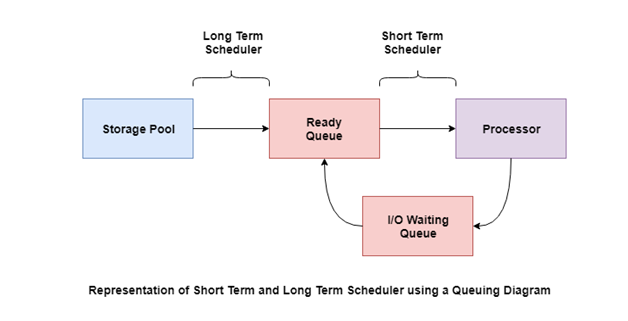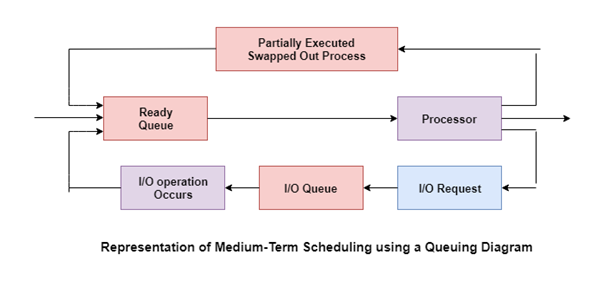Scheduler
Scheduling Objectives
Here, are important objectives of Process scheduling
- Maximize the number of interactive users within acceptable response times.
- Achieve a balance between response and utilization.
- Avoid indefinite postponement and enforce priorities.
- It also should give reference to the processes holding the key resources
Process Scheduling handles the selection of a process for the processor on the basis of a scheduling algorithm and also the removal of a process from the processor. It is an important part of multiprogramming in operating system.
Process scheduling involves short-term scheduling, medium-term scheduling and long-term scheduling. Details about these are given as follows −
- Long-Term Scheduling
Long-term scheduling involves selecting the processes from the storage pool in the secondary memory and loading them into the ready queue in the main memory for execution. This is handled by the long-term scheduler or job scheduler.
The long-term scheduler controls the degree of multiprogramming. It must select a careful mixture of I/O bound and CPU bound processes to yield optimum system throughput. If it selects too many CPU bound processes then the I/O devices are idle and if it selects too many I/O bound processes then the processor has nothing to do.
- Short-Term Scheduling
Short-term scheduling involves selecting one of the processes from the ready queue and scheduling them for execution. This is done by the short-term scheduler. A scheduling algorithm is used to decide which process will be scheduled for execution next by the short-term scheduler.
The short-term scheduler executes much more frequently than the long-term scheduler as a process may execute only for a few milliseconds.
The choices of the short term scheduler are very important. If it selects a process with a long burst time, then all the processes after that will have to wait for a long time in the ready queue. This is known as starvation and it may happen if a wrong decision is made by the short-term scheduler.
A diagram that demonstrates scheduling using long-term and short-term schedulers is given as follows −
- Medium-Term Scheduling
Medium-term scheduling involves swapping out a process from main memory. The process can be swapped in later from the point it stopped executing. This can also be called as suspending and resuming the process and is done by the medium-term scheduler.
This is helpful in reducing the degree of multiprogramming. Swapping is also useful to improve the mix of I/O bound and CPU bound processes in the memory.
A diagram that demonstrates medium-term scheduling is given as follows −


Comments
Post a Comment